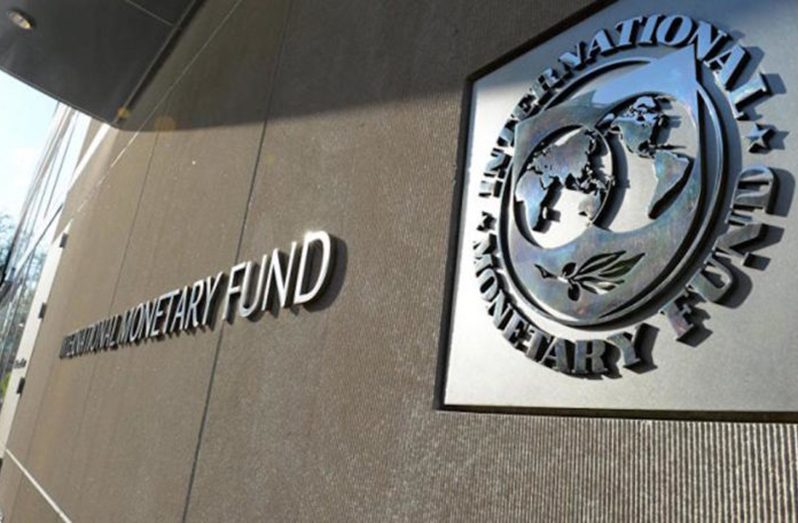–projects greater reduction to record-low 13 per cent of GDP by 2027
THE International Monetary Fund (IMF) has commended Guyana for its consistent reduction in public debt, accomplished through the government’s strategic and prudent management of the local economy.
“Directors welcomed the significant decline in public debt and favourable debt dynamics going forward, the authorities’ commitment to maintaining debt sustainability and stressed the importance of anchoring fiscal policy in a medium-term framework,” the IMF said in a report documenting the conclusions of its Article IV Consultation with local authorities.
Public debt, at the end of 2021, stood at 42.9 per cent of Gross Domestic Product (GDP), one of the lowest in the region, according to the IMF.
Guyana, at the end of the first half of 2021, had reported that the financial system reflected monetary and financial stability, with a moderate level of credit growth as well as a well-capitalised and profitable banking, insurance and pension industry.
The prospects, in this regard, remain positive, as the IMF projects that Guyana’s public debt will decline steadily, reaching a record low of around 13 per cent of GDP by the end of 2027.
The country, according to the Ministry of Finance’s website, is being guided by the Public Debt Policy 2021-2024.
According to the policy, the graduation of Guyana’s economy from lower middle-income to upper middle-income status has occasioned a decline in access to the concessional financing.
“This has necessitated a heightened focus on effective debt management in order to ensure the financing of Guyana’s development initiatives in a manner which simultaneously ensures long term sustainability. The policy covers all external and domestic public and publicly guaranteed debt, from 2021-2024,” the document stated.
Guyana’s primary debt management objective, based on the policy, is to ensure that the country’s financing needs, and its payment obligations are met at the lowest possible cost over the medium and long terms, consistent with a prudent degree of risk.
“Prudent risk management is integral to the cultivation of a stable macroeconomic outlook, as well as the avoidance of sharp increases in funding costs and dangerous debt structures and strategies (including monetary financing of the government’s debt).
“Furthermore, Guyana’s debt objectives shall be aligned with the need to cover its funding gap and the goal of long-term debt sustainability,” the document related.
Total gross public debt has declined significantly over the past decade, driven by repayments, and prudent debt management.
External debt, according to the IMF, accounts for over 40 per cent of total public sector debt, mostly to multilateral institutions. Multilateral creditors accounted for over 65 per cent of total external debt in 2021. The IDB is the largest multilateral creditor, accounting for 46.1 per cent of total external debt at end-2021.
China’s state-owned Export-Import Bank is the largest bilateral creditor, comprising 17.3 per cent of total external debt at end-2021. Eurobond holders are the only private (commercial) creditors. Domestic debt comprises mainly Treasury bills (T-bills) and borrowing from the central bank, which is now securitised.
ECONOMIC DIVERSIFICATION
Debt management will continue to be crucial as the government moves ahead with plans to diversify the economy and support long-term growth by investing in infrastructure and education.
“In response to the pandemic in 2020, the authorities reallocated expenditures towards cash grants and transfers to households and “shovel ready” public investment projects, primarily focused on improving road networks and providing affordable housing,” the IMF said.
Further, the 2022 budget includes a substantial increase in public investment, and the government is planning to maintain this effort over the medium term to address bottlenecks to growth, focusing on transport infrastructure and education (including greater access to education in the hinterland by building new schools).
Public capital spending is projected to increase from 9.5 per cent of non-oil GDP in 2021 to 12.1 per cent in 2022, and to 12.5 per cent of non-oil GDP over the medium term.
According to the IMF: “Additional support for long-term growth is expected to come from further progress on strengthening the governance framework, as it ensures a good use of public funds. Several pillars of the anti-corruption framework have been recently strengthened, including the Integrity and Public Procurement Commissions (IC and PPC) and the National Procurement and Tender Administration Board (NPTAB).”
The international financial institution went on to acknowledge the publication of audit reports on public expenditures, including for COVID-19, and the government’s efforts to follow up on recommendations made in those audit reports.
“Asset declarations of a large number of public officials are submitted annually, and public procurement tenders are streamed live,” the IMF said.
The authorities, the organisation said, also made progress in implementing the recommendations of the 2019 and 2021 Extractive Industries Transparency Initiative (EITI) reports, notably on the reconciliation with the fiscal regime.
“Some progress has also been made on information sharing and publication of extractive industries’ financial statements, and the authorities are strengthening capacity to address remaining gaps, including in moving towards electronic disclosure and adequate follow-up,” the IMF related.



.jpg)











